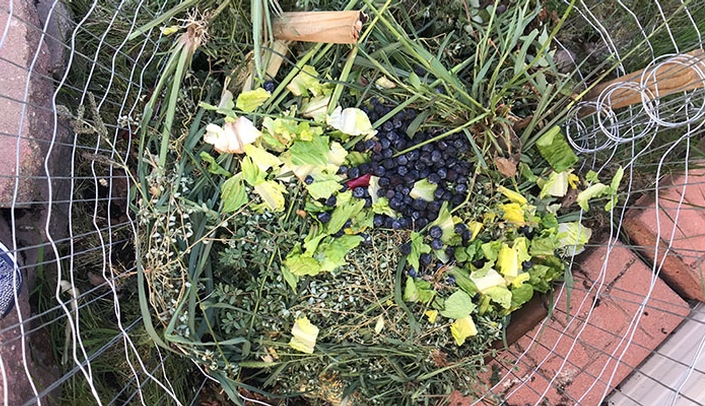Last month, I told you about my effort to start composting in my backyard. After starting in a cardboard box, which then started composting, we moved to milk crates. They were small, had ventilation, and could be moved if necessary. As is often true, the easiest way is often the best way. After trying a few ideas, we settled on a fenced pile in the backyard. It was easy, simple and free.
Composting is like having a very quiet pet. I needed to water, feed and turn the compost. This can even be taken literally if you are vermicomposting. I am going to admit that I did not take care of the compost properly in the beginning, and there was some smell. Most sources recommend having twice as much “brown” material as you have “green” material. This makes for good compost, but green is easier to come by — brown tends to be seasonal. My pile had too much green and was kind of like a pile of rotting trash. This was remedied by adding more browns, and turning the compost regularly.
Every few days, I took out my kitchen waste to the compost pile. If it seemed very dry, I would add a bit of water then. There was not much need of that this spring. With the wet weather, turning more frequently is helpful. I usually turn the compost with a shovel about once a week.
I have not had any problems with pests so far. Adding the right amount of brown material helps with that, too, though I did struggle with that. We don’t have any trees in the backyard, and we don’t rake. My husband usually just mulches the leaves up with the lawn mower and lets them stay in the yard. So I did have to make a special effort to grab leaves to throw in. With better caretaking, there was no noticeable smell. Shredded newspaper, brown paper in delivery boxes, sticks and lawn clippings that have turned brown also can be used.
Composting takes patience. Depending on the type of composting you are doing, it may take several months or more for your finished product. The temperature, season and how well you treat your compost pile will determine how long it may take. Having more than one compost pile may be ideal, so the first can finish while you continue to add to the second.
